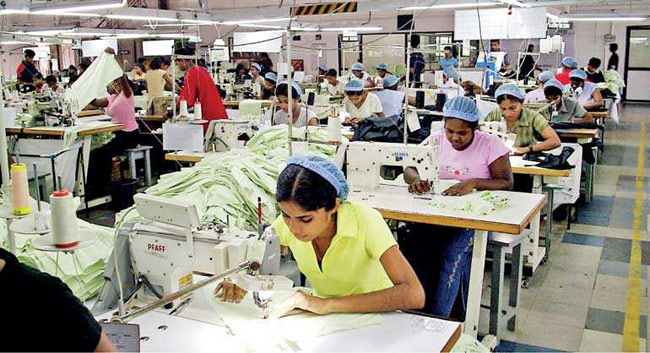There are 300 manufacturing companies that employ 350 thousand workers and produce garments for dozens of major international brands. Trade unions: the companies ‘have also closed entire facilities without even paying the paltry compensation recommended by the government’. The industry accounts for more than 50 per cent of total national export revenue.
About 50 thousand garment workers have lost their jobs due to the economic crisis. The country is home to more or less 300 manufacturing companies that employ 350 thousand workers, who in turn support an estimated 700 thousand family members.
These companies produce garments for dozens of major international brands based in the US and Europe, including Victoria’s Secret, Marks & Spencer, GAP, Tommy Hilfiger and VanHeusen.
Senior manager Nilantha Kaluarachchi, an employee of Export Processing Zone ‘A’ in Biyagama, explained to AsiaNews that ‘several Sri Lankan garment factory owners have not only cut jobs and wages, but also closed down entire facilities without even paying the paltry compensation recommended by the government.
The basic monthly income of many workers struggling with hyperinflation has fallen to around 25 thousand rupees [US]’.
According to the secretary of the Manufacturers’ Association, Dhammika Fernando, ‘there is a reduction of workers in the factories and some companies have downsized their operations, while companies with 400-500 workers are open four days a week. The workers in these factories have to work 10 hours a day without overdoing it’.
“At the last meeting of the National Labour Council it was decided to allow a five-day working week for the rest of the year, provided that no one can be employed on Saturdays. But the garment industry wants to get permission for employees to work on Saturdays,’ Fernando added.
According to the joint secretary of the Free Trade Zone and General Services Employees’ Union, Anton Marcus, ’employers are expecting a series of labour reforms that worry the unions: increasing the number of overtime hours per month from 60 to 75 hours and increasing night shifts for women from 10 to 15 days. This would prevent companies from hiring more workers by making the most of their labour force’.
“About 50 thousand employees in the garment sector have been laid off, their wages vanished overnight after a rapid currency devaluation, even though their work continues to enrich the country’s three major garment factory conglomerates and their important customers, including major international brands,” Anton pointed out.
Most of the workers are also not paid the minimum ’emergency allowance’ of 10 thousand rupees (USD 27), intended to help them overcome the crisis, despite the fact that the current basic wages are heavily devalued. Anton explains that all brands that source in Sri Lanka have been asked to guarantee the monthly payment of the emergency allowance to their supply chain workers.
The operations manager at the Katunayaka Free Trade Zone factory, Dasun Amaranayake, said that ‘some factories give their employees extra support, such as a monthly bonus of 500 rupees (.37) or a food parcel if they have never taken a day off. With wage and benefit adjustments, workers receive between 20,000 and 23,500 rupees (-65) monthly. However, this is an insufficient amount considering that, before the economic crisis, employees’ wages were barely at subsistence level and were then worth between 0 and 5 per month’.
“Employees in the garment sector, mostly women, have migrated from their villages to support their families, and are the basis of an industry that accounts for more than 50 per cent of Sri Lanka’s total export earnings. Yet they have suffered from all the crises that have hit the country in recent years: during the Covid-19 pandemic, the income from this industry was deemed too important to let the workers shut themselves away, causing mass outbreaks in factories and workers’ homes. In the first three months of the pandemic, garment workers lost around 40% of their wages. The government meanwhile is not interested in dialogue between social partners,’ Dasun pointed out.


